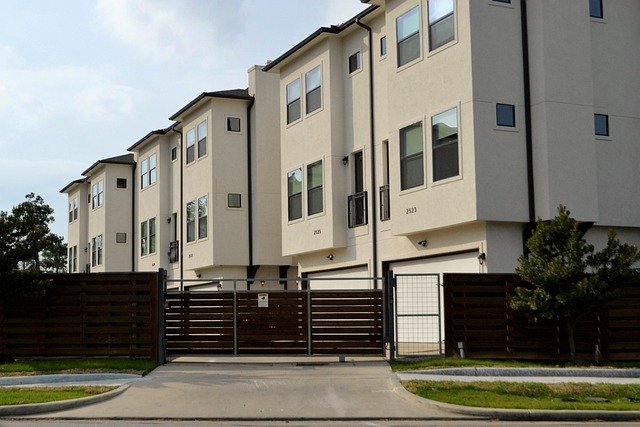A Guide to Exploring 1-Bedroom Apartment Options
Finding the perfect 1-bedroom apartment requires understanding the diverse options available in today's real estate market. Whether you're a first-time buyer, downsizing, or investing, 1-bedroom apartments offer flexibility and efficiency across various settings. This comprehensive guide explores different types of 1-bedroom apartments to help you make an informed decision based on location, amenities, and budget considerations.

The 1-bedroom apartment market represents a significant segment of residential real estate, appealing to singles, couples, investors, and those seeking a more minimalist lifestyle. These versatile spaces typically range from 500 to 800 square feet, though sizes can vary considerably depending on location, building age, and design philosophy. When exploring 1-bedroom apartment options, understanding the distinct characteristics of different settings and styles can help narrow your search to match your lifestyle needs and financial goals.
Urban 1-Bedroom Apartments
Urban 1-bedroom apartments offer the excitement of city living with proximity to employment centers, cultural attractions, and public transportation. These units typically feature space-efficient designs that maximize functionality in smaller footprints. Many urban developments incorporate amenities like rooftop terraces, fitness centers, and co-working spaces to compensate for compact living quarters.
In city centers, 1-bedroom apartments often come in various architectural styles, from converted industrial lofts to sleek high-rise units with floor-to-ceiling windows. Urban apartments frequently command premium prices per square foot but offer lifestyle benefits that many residents find worthwhile, including walkability and reduced commute times. Security features such as doormen, camera systems, and secure entry are common selling points in urban settings.
Suburban 1-Bedroom Apartments
Suburban 1-bedroom apartments provide a middle ground between urban density and rural spaciousness. These units typically offer more square footage than their urban counterparts at lower price points, making them attractive to buyers seeking value. Suburban developments often feature more generous layouts, dedicated parking, and green spaces that urban properties might lack.
Many suburban 1-bedroom apartments are found in garden-style or mid-rise complexes with landscaped grounds and community amenities like pools and outdoor recreation areas. These properties frequently appeal to professionals who commute to nearby cities but prefer quieter residential environments. Suburban locations may offer better appreciation potential in growing metropolitan areas where development is expanding outward from city centers.
Luxury 1-Bedroom Apartments
Luxury 1-bedroom apartments distinguish themselves through premium finishes, exclusive amenities, and prestigious locations. These units feature high-end appliances, custom cabinetry, designer fixtures, and superior materials throughout. Ceiling heights are typically more generous, and floor plans are thoughtfully designed to create a sense of spaciousness and flow.
The luxury segment includes concierge services, valet parking, private resident lounges, and spa facilities that create a hotel-like living experience. Smart home technology is increasingly standard in luxury units, allowing residents to control lighting, climate, entertainment systems, and security features remotely. While luxury 1-bedroom apartments represent a significant investment, they often hold value well and may appreciate faster than standard units in the same neighborhoods.
Affordable 1-Bedroom Apartments
Affordable 1-bedroom apartments provide entry points to homeownership for first-time buyers and those with budget constraints. These units may be found in older buildings, emerging neighborhoods, or developments specifically designed to meet affordability criteria. Some affordable options result from government programs that incentivize developers to include lower-priced units in new construction projects.
Buyers seeking affordable 1-bedroom apartments should investigate first-time homebuyer programs, which may offer down payment assistance or favorable financing terms. Housing cooperatives and condominiums in established neighborhoods sometimes offer more affordable options compared to new construction. While these units may lack the amenities of luxury developments, they provide the benefits of ownership and potential equity building at accessible price points.
Price Comparison Across Different Markets
When comparing 1-bedroom apartment options, location significantly impacts pricing. Understanding typical price ranges across different market segments helps establish realistic expectations for your search.
| Location Type | Average Price Range | Typical Size (sq ft) | Common Amenities |
|---|---|---|---|
| Urban Core | $300,000-$800,000+ | 500-700 | Doorman, Fitness Center, Rooftop Space |
| Urban Periphery | $200,000-$450,000 | 550-750 | Secured Entry, Community Room, Bike Storage |
| Suburban | $150,000-$350,000 | 650-850 | Parking, Pool, Landscaped Grounds |
| Luxury Urban | $500,000-$1,500,000+ | 700-1,100 | Concierge, Valet, Smart Home Features |
| Affordable Housing | $100,000-$250,000 | 500-700 | Basic Amenities, Community Programs |
Prices, rates, or cost estimates mentioned in this article are based on the latest available information but may change over time. Independent research is advised before making financial decisions.
Important Considerations Before Purchase
Beyond location and price, several factors deserve careful consideration when evaluating 1-bedroom apartment options. Monthly maintenance or HOA fees significantly impact the total cost of ownership and vary widely between properties. These fees typically cover building insurance, common area maintenance, and sometimes utilities, but the specific inclusions differ by development.
Building age and construction quality influence both immediate comfort and long-term maintenance expenses. Newer buildings generally incorporate modern energy efficiency standards and updated building codes, potentially reducing utility costs and offering better sound insulation. However, older buildings sometimes feature more generous proportions and architectural details not found in contemporary construction.
Resale potential should factor into your decision, particularly if you anticipate selling within five to ten years. Units with universal appeal, such as those in well-established neighborhoods with strong school districts and convenient transportation access, typically maintain stronger resale value regardless of market fluctuations.
The process of purchasing a 1-bedroom apartment involves several steps, from securing financing pre-approval to closing. Working with real estate professionals familiar with the specific market segment you’re targeting can provide valuable guidance through this complex process and help identify properties that best align with your priorities and budget.




